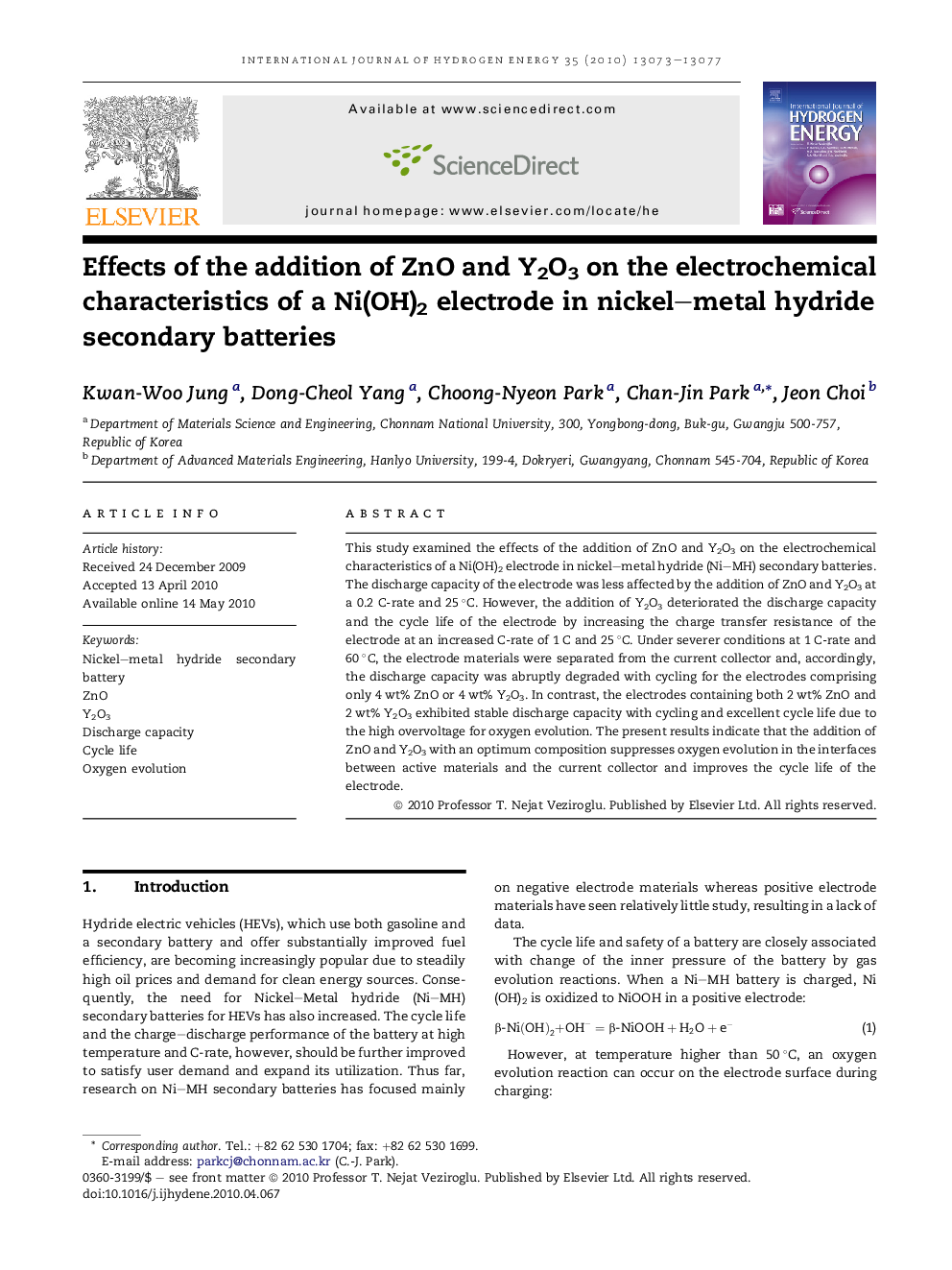| Article ID | Journal | Published Year | Pages | File Type |
|---|---|---|---|---|
| 1279958 | International Journal of Hydrogen Energy | 2010 | 5 Pages |
This study examined the effects of the addition of ZnO and Y2O3 on the electrochemical characteristics of a Ni(OH)2 electrode in nickel–metal hydride (Ni–MH) secondary batteries. The discharge capacity of the electrode was less affected by the addition of ZnO and Y2O3 at a 0.2 C-rate and 25 °C. However, the addition of Y2O3 deteriorated the discharge capacity and the cycle life of the electrode by increasing the charge transfer resistance of the electrode at an increased C-rate of 1 C and 25 °C. Under severer conditions at 1 C-rate and 60 °C, the electrode materials were separated from the current collector and, accordingly, the discharge capacity was abruptly degraded with cycling for the electrodes comprising only 4 wt% ZnO or 4 wt% Y2O3. In contrast, the electrodes containing both 2 wt% ZnO and 2 wt% Y2O3 exhibited stable discharge capacity with cycling and excellent cycle life due to the high overvoltage for oxygen evolution. The present results indicate that the addition of ZnO and Y2O3 with an optimum composition suppresses oxygen evolution in the interfaces between active materials and the current collector and improves the cycle life of the electrode.
